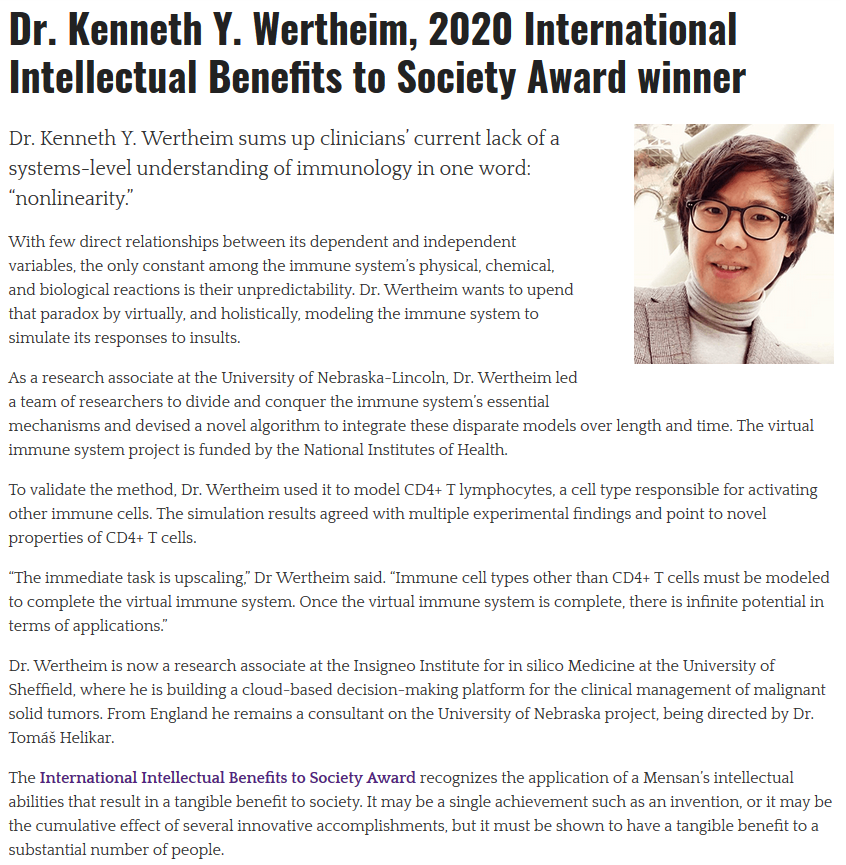Navigation
Development of a Virtual Immune System
From March 2017 to January 2019, I led the development of a virtual immune system. The goal was to represent the constituting cells and molecules of the human immune system logically in space, time, and in relation to each other. The project was conceived and directed by Professor Tomas Helikar.
In the first phase of the project, I built a multiscale model of CD4+ T lymphocytes by leveraging logical modelling (Boolean networks), constraint-based modelling, agent-based modelling, and ordinary differential equations. In this model, the cells are represented by discrete agents and the relevant cytokines are described by continuous concentrations; both are distributed in three compartments representing the whole body. Within each agent, signal transduction, gene regulation, and metabolism are integrated in a logical model coupled to genome-scale constraint-based metabolic models.
I wrote an algorithm to implement the model, combining a Monte Carlo method, the Kolmogorov-Smirnov test, linear programming, and a finite difference method. Armed with this algorithm, I carried out computer simulations to validate the model and make predictions. Based on the results, I proposed novel emergent switch-like and oscillatory behaviours for CD4+ T cells.
In the second phase, I added more agent types to the framework encompassing the model, including neutrophils, macrophages, dendritic cells, basophils, and CD8+ T lymphocytes. Although I left the project after laying the foundation of the virtual immune system, I remain available in a consulting capacity.
In the course of this project, I worked with two PhD candidates (Aimee Kessell and Sydney Townsend) and three undergraduate students (Alyssa La Fleur, Robert Moore, and Bailee Lichter).
Here is a presentation about this project: slides and video recording.

